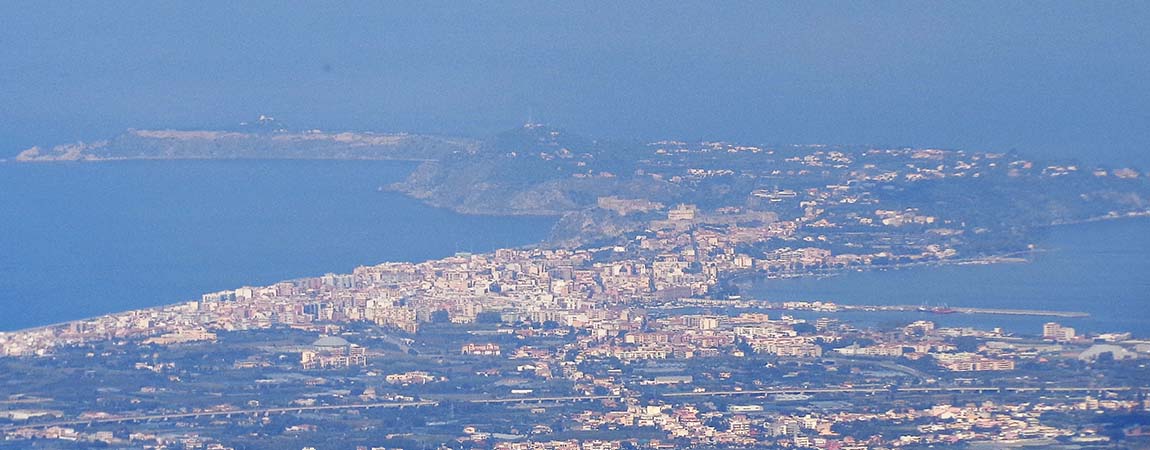
The name of this important location always arouses great curiosity. All those who are preparing to organize a trip to the area are eager to learn about the history and origins of Barcellona Pozzo di Gotto, starting from the reasons that link the Messina municipality to the capital of Catalonia.
In fact it is not just a matter of homonymy but there is a direct relationship that has its origins in the times of Spanish domination. Today it represents a preferential destination for an ever-increasing number of tourists, attracted by the numerous points of interest and the peculiar landscape, with a beautiful coast facing the Aeolian Islands and a hinterland characterized by reliefs, in a pleasant environmental mix that makes it unique.
The traveler also and above all has the privilege of tasting the typical local delights, with culinary offers not to be missed and traditional delicacies such as cannoli, arancini and many other delicacies.
The name: history and origins of Barcellona Pozzo di Gotto
Where does the name of this municipality come from? First of all, it is necessary to mention Sicily's very close relationship with the Spanish and, in this specific case, with the families of Altavilla and Aragon.
It should also be highlighted that for the long period of time between the end of 1200 and 1600 the Sicilian sovereigns were also Counts of the Catalan city. The similarities of the denomination are not limited, however, to the dynasties that played a role of dominion but also concern the specific particularities of the territory.
Exactly like the better-known Spanish Barcelona, in fact, Barcellona Pozzo di Gotto is located in a position nestled between the seascape and the mountains. As far as the Iberian city is concerned, these are, respectively, the Pyrenees and the Mediterranean Sea, while for the Sicilian town we refer to Peloritani and the Tyrrhenian Sea.
Pozzo di Gotto, on the other hand, derives from an irrigation work from the 1400s, that is, a well that was used to guarantee the water supply to the lands that belonged to Nicola Goto. An inhabited village was born in the surrounding area which then developed and, starting from the year 1835, the two terms were united taking on the current name of Barcellona Pozzo di Gotto.
The strong imprint of an ancient history
The anthropization of the area dates back to the Bronze Age, with numerous archaeological finds found nearby Contrada Maloto, Monte S. Onofrio, Monte Oliveto and Pizzo Lando. From the Norman period we began to have the first historical sources, in a context in which the Fiumane and the typically agricultural territory began to have great importance in a system built around the famous Milazzo.
Even today Barcellona Pozzo di Gotto has many economic activities linked to its geographical characteristics, with the cultivation of grapes, cereals, olives and citrus fruits. Here wooden barrels and vats are produced by hand and cattle and sheep are raised.
On the other hand, the extremely strategic position made this location a meeting point but also a military clash for those who wanted to take possession of the Aeolian Islands or Messina and its strait, with the city that has always treasured the textile products, fruit and vegetables, livestock farming and gastronomy of the plain. The Longano stream has always marked a sort of border to be conquered, the scene of famous battles from the XNUMXrd century BC until the American landing of the Second World War in the modern era.
A territory waiting to be discovered
The alluvial plain that was formed as part of repeated telluric events characterizes the history and origins of Barcellona Pozzo di Gotto. Suffice it to say that here we are at the same distance between Stromboli and Etna, an element to be taken into strong consideration to understand the true nature of the area. A tourist can admire the enormous variety of offerings, with views ranging from the mountains to the sea, in an absolutely original range of proposals.
The municipality includes the Peloritani and the beautiful beaches of fine sand and gravel, an unmissable destination for holidaymakers in the summer period. The seaside resorts that go from Tindari a Milazzo they are characterized by crystal clear water. It is the ideal place to spend a very pleasant stay, diving, snorkeling and enjoying the privilege of a fairytale sea.
Fishing offers a very fresh and top quality fish product, which enriches the typical traditional recipes presented by the numerous restaurants. Until a few years ago the typical tuna fisheries were active but fishing has never stopped playing the role of a significant economic source. Some legends say that they grazed right on the coast the cows of the Sun God, myth strengthened by the fact that the town hosted the Boario market.
Even Ulysses and his traveling companions may have landed on the beach, after having received hospitality at Lipari at God of the Winds, story told within the Homeric masterpiece of the Odyssey.
Messina's culinary excellences
In Barcellona Pozzo di Gotto there are many restaurant activities, pizzerias and clubs offering traditional Sicilian delights. Messina cuisine is the real protagonist here, with fish-based dishes strictly of local origin and meat alternatives.
The list of specialties identifiable as street food includes arancini, the classic breaded and fried cone with rice, peas, ragù or with different fillings. Another delicacy to try is the Messina focaccia, which differs from pizza due to its thick and soft dough, covered with cheese, tomato, anchovies and escarole.
As an appetizer it is possible to eat caponata, stockfish salad, provola dei Nebrodi. As regards first courses, second courses and desserts, pasta with breadcrumbs, Messina-style swordfish and rice sfincione are famous.
Do you want to discover a beautiful area and spend a holiday in a fascinating landscape setting? Barcellona Pozzo di Gotto awaits you with a unique and inimitable tourist offer!
© Effems, CC BY-SA 4.0 https://creativecommons.org/licenses/by-sa/4.0, via Wikimedia Commons









